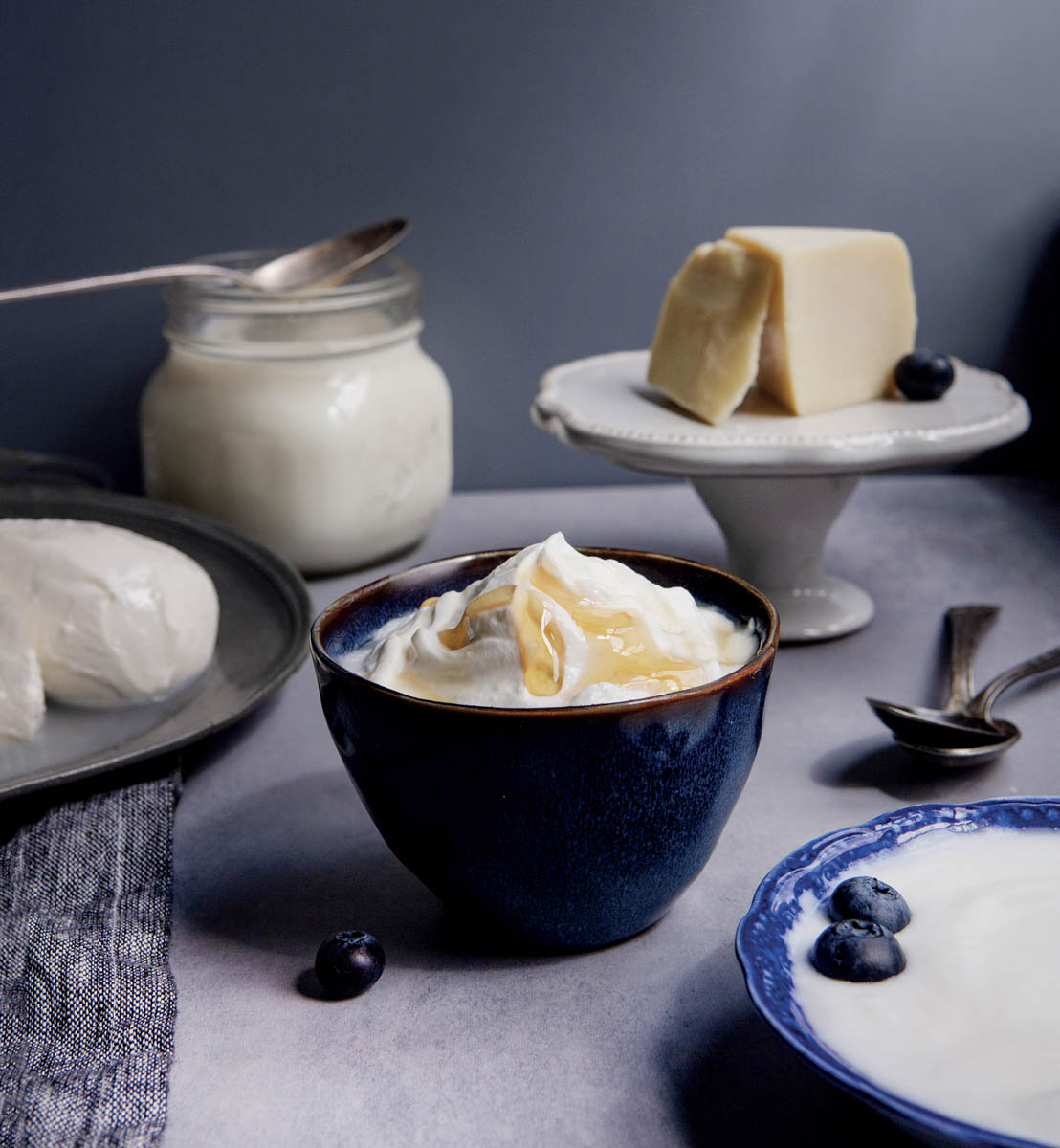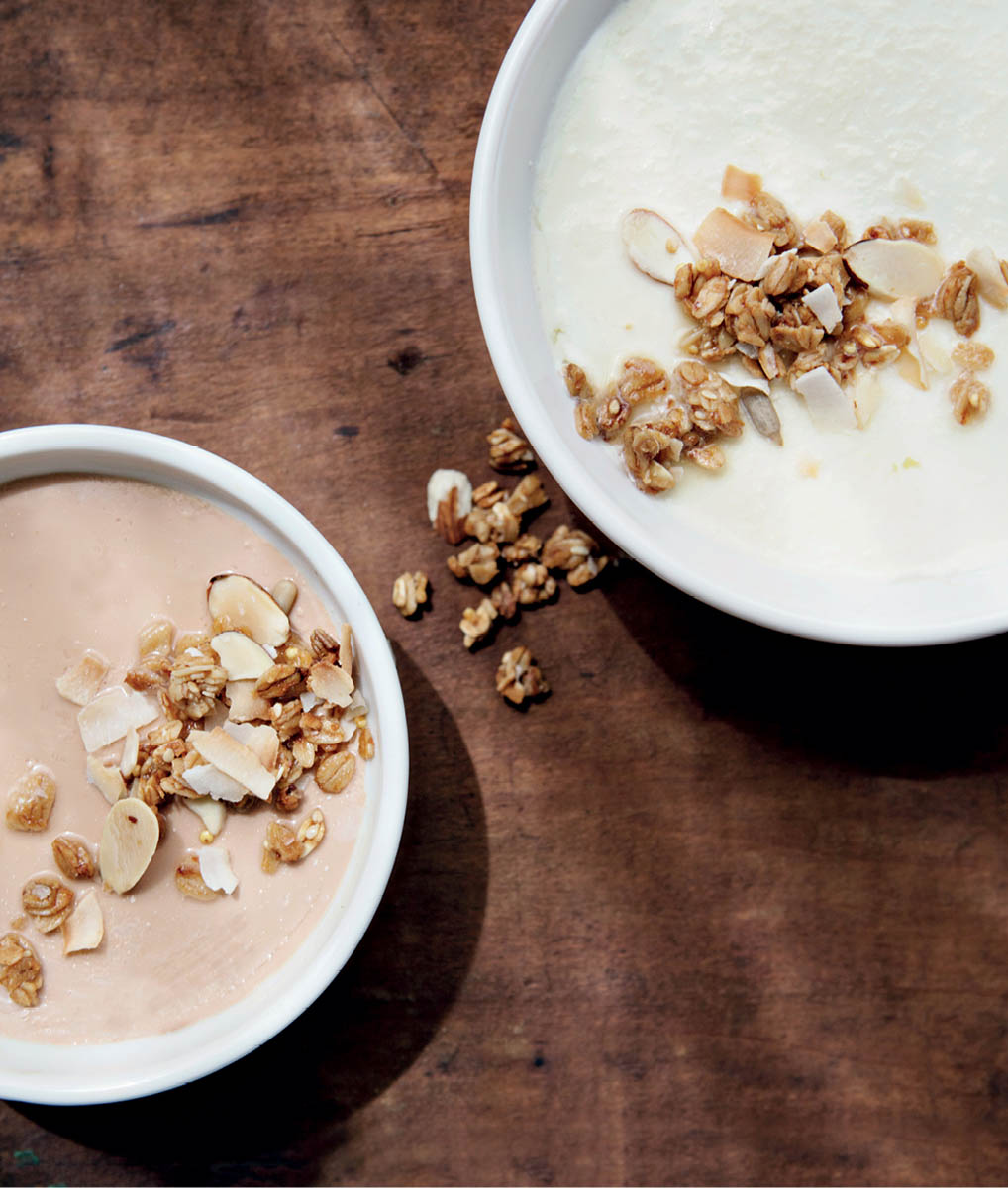

Fermented milk helps support what is arguably the most important system in our bodies: our microbiome — the unseen fungi, viruses, and bacteria whose population exceeds that of our own body cells. A healthy microbiome is essential for a healthy body.
If we could study our daily world through the lens of a high-powered microscope, we might be a bit disconcerted to find that even when solitary, we are not alone. Our skin, the air surrounding us, and virtually every surface in our environment is teeming with tiny life-forms. Bacteria, viruses, molds, and yeasts inhabit all but the most recently sterilized environments. Rather than think of these microorganisms as “germs” and contaminants, we should see them for what they truly are: essential parts of the planet and all life on it. Fortunately, we live in a time when science and popular wisdom are embracing the role that microbes play in our lives and health. Indeed, it’s now easier than ever to find foods that have been customized for us by the best nutritionists ever — fermentation microbes.
Fermented, probiotic dairy products are among the best “functional foods” — that is, foods that promote health beyond providing basic nutrition. This is thanks to the probiotic microbes they contain, which produce a wide range of by-products and benefits that transform already nutritious milk into something approaching a superfood. The word probiotic literally translates to “for life.” The World Health Organization (WHO) defines probiotics as “microorganisms that when administered in an adequate amount confer a beneficial health effect on the host.” They work with and support the human microbiome. Here are the known functions of probiotic microbes:

Regular consumption of probiotics and prebiotics (nutrients that the probiotic bacteria need to survive, like fiber) nurtures a healthy gut and microbiome. The effects of fermented milk probiotics on gastrointestinal problems such as digestive dysfunction, infectious diarrhea, antibiotic-associated diarrhea, gastroenteritis, and vaginal flora insufficiency have all been well studied. Fermented milk probiotics are also being studied for uses in maintaining a healthy weight, controlling blood pressure, preventing cancer, treating the gastric–ulcer associated bacterium Helicobacter pylori, and even enhancing mood.
All fermented milk probiotics are not created equal, however! Different products have different amounts and types of microbes, which influence each product’s nutritional value. Each culture (the source of fermenting microbes), whether it’s a commercially produced culture (the most understood, or defined), a 100-year-old heirloom culture, or a lively glob of kefir grains (with the broadest spectrum of microbes), might offer a different array of microbes, from those that are primarily probiotic to those that simply do the fermentation work. Plus, it’s truly impossible to quantify the numbers of live, active microbes in a jar of yogurt, especially since the number decreases the longer it sits in your fridge. Just remember that the fresher a fermented milk product is, the more microbes will be alive and well — and available for your body’s benefit.
I gathered the recipes in part 3 of this book with microbes in mind, so that you can get the full benefit of these probiotic bacteria. These dishes are meant to be consumed cold or at room temperature because heat will destroy many of the most beneficial bacteria. You can certainly use yogurt and other fermented milk products in many other ways, such as in hot curries and gravies or on your steaming-hot baked potato, but with heat, the probiotic benefits are likely to be lost. And remember, you can also use purchased dairy ferments to make any of the recipes in part 3!
